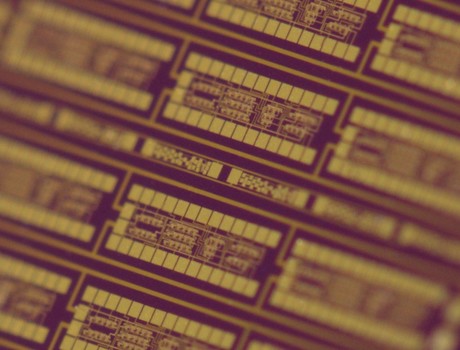A microprocessor based on a 2D semiconductor

Researchers at TU Wien have developed a microprocessor based on atomically thin materials, in a breakthrough which could contribute to the evolution of traditional processors as well as new applications in the field of flexible electronics.
While silicon has always been used in the production of microprocessors, it is beginning to approach its physical limits. 2D materials such as molybdenum disulfide are now showing promise as potential replacements, offering the advantage of extreme versatility due to the fact that they are made up of just one or a few layers of atoms.
But although research into individual transistors made of 2D materials has been underway since the discovery of graphene back in 2004, success in creating complex structures has been limited — to date, it has only been possible to produce individual digital components using a few transistors. In order to achieve a microprocessor that operates independently, much more complex circuits are required.
Researchers at TU Wien’s Photonics Institute have now managed to achieve this for the first time, creating a 1-bit microprocessor consisting of 115 transistors over a surface area of around 0.6 mm2 that can run simple programs. Their work has been published in the journal Nature Communications.
“Although this does of course seem modest when compared to the industry standards based on silicon, this is still a major breakthrough within this field of research,” Stefan Wachter, a doctoral student in the research group, said. “Now that we have a proof of concept, in principle there is no reason that further developments can’t be made.”
As explained by team leader Thomas Mueller, it was not just the choice of material that resulted in the success of the research project. “We also gave careful consideration to the dimensions of the individual transistors,” he said. “The exact relationships between the transistor geometries within a basic circuit component are a critical factor in being able to create and cascade more complex units.”

The researchers acknowledged that much more powerful and complex circuits, with thousands or even millions of transistors, will be required for this technology to have a practical application. And as the team’s circuits were made “more or less by hand in the lab”, Mueller said, “such complex designs are of course pretty much beyond our capability” — for now, at least.
However, the researchers are convinced that industrial methods could open up new fields of application for this technology over the next few years. One such example might be flexible electronics, which are required for medical sensors and flexible displays. In this case, 2D materials are much more suitable than the silicon traditionally used owing to their greater mechanical flexibility.
Novel antenna tech developed for 6G communications
Researchers have developed a novel metasurface antenna that can generate and control multiple...
Eliminating 'efficiency droop' for brighter LEDs
Researchers have found a way to make LEDs brighter while maintaining their efficiency for...
3D semiconductor chip alignment boosts performance
Researchers have developed an ultra-precise method to align 3D semiconductor chips using lasers...




